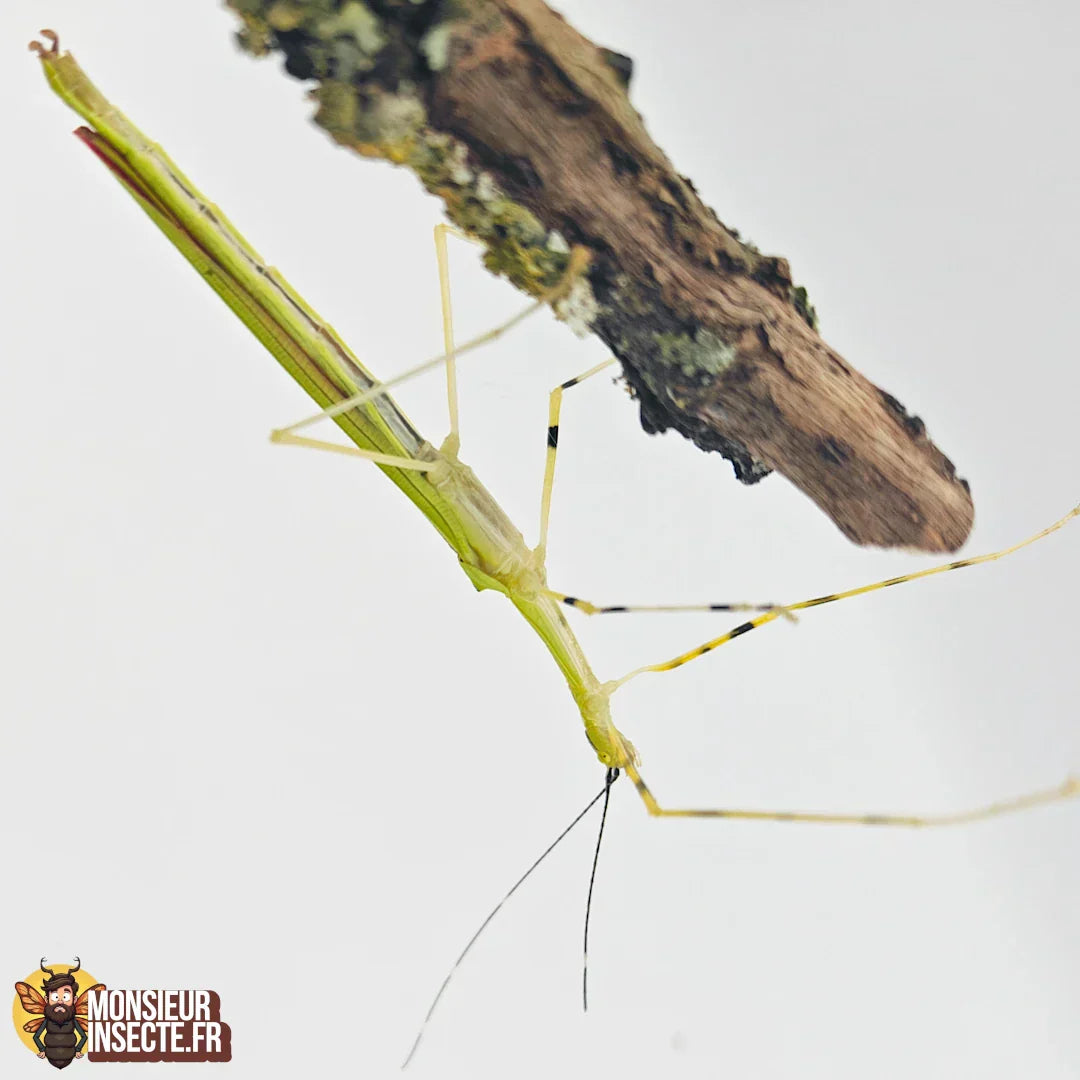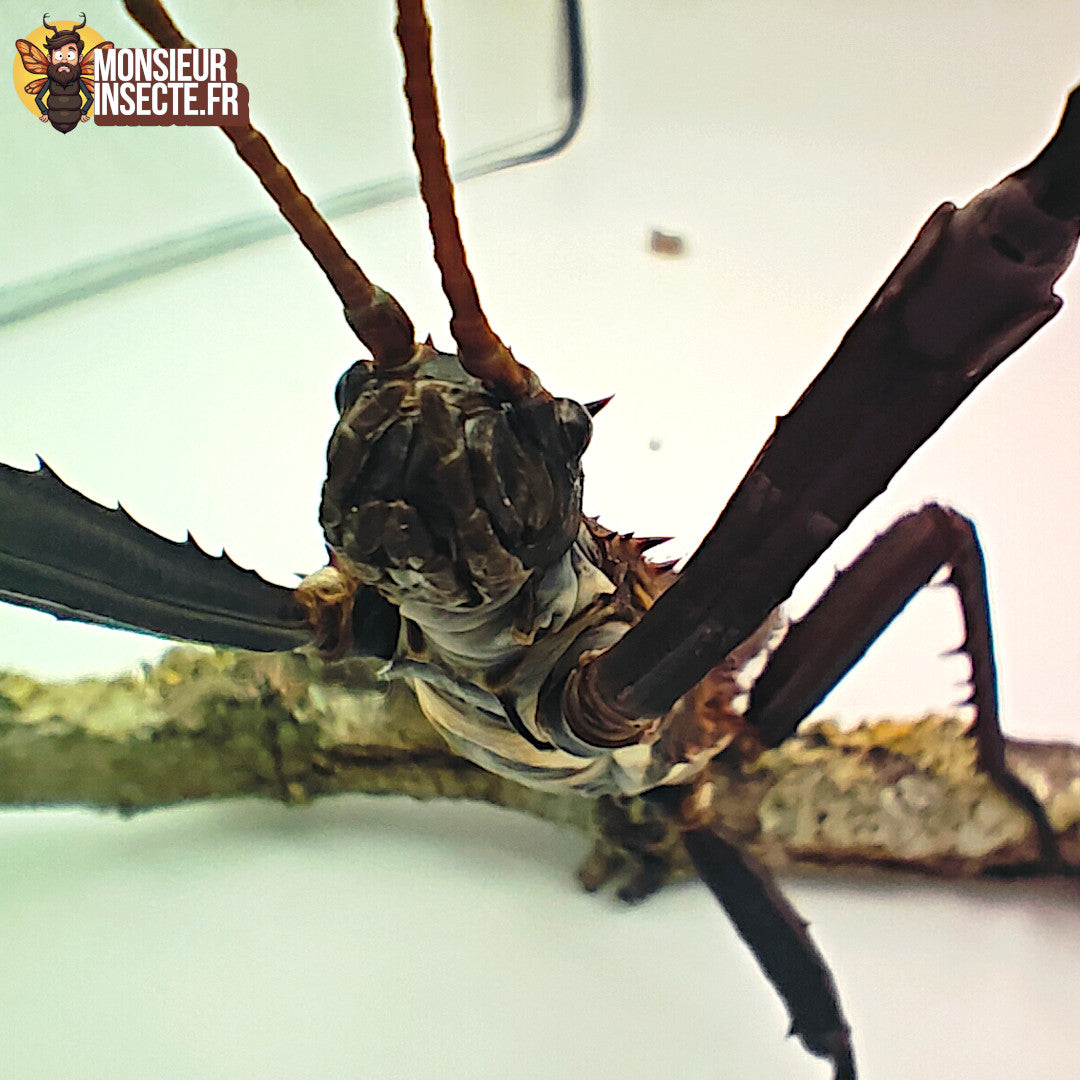Stick insects, those fascinating insects known for their perfect mimicry of branches and leaves, have an intriguing habit: they appear to "dance" when they move or even remain motionless. But why do they adopt this behavior? Let's explore the reasons behind this strange choreography of nature.
Calvisia Kneubuehleri dancing at the end of a branch 
1. A dance to camouflage yourself
The rhythmic movement of stick insects is no mere coincidence. Their dance is actually a survival strategy . By mimicking the swaying of leaves or branches in the wind, stick insects enhance their camouflage. This behavior fools predators like birds and reptiles, making them appear as part of the scenery.
By gently swaying from side to side or moving forward with jerky movements, they blend even better into their natural environment.
2. A response to the wind
Stick insects are extremely sensitive to their environment. When a slight breeze stirs the plants around them, they begin to move in sync. This behavior is instinctive: by mimicking the movement of leaves, they avoid being detected as a stationary object, which could attract the attention of predators.
3. An evolutionary heritage
Stick insect mimicry is one of the best examples of adaptation in the animal kingdom. Their "dance" has evolved over millions of years to maximize their chances of survival. This behavior, which might seem harmless or aesthetic, is actually a formidably effective defensive weapon .
4. Discreet communication?
Although stick insect dancing is primarily related to camouflage, some scientists suggest it may also play a role in their communication . These subtle movements may allow stick insects to interact with each other, particularly during reproduction or to mark territory. However, this hypothesis is still under investigation.
5. A mesmerizing dance for enthusiasts
If you keep stick insects, you've probably noticed this curious habit. Their slow, elegant dance is not only fascinating to watch, but also demonstrates the complexity of nature's adaptations. Observing this behavior up close will help you better understand these extraordinary creatures.
In summary
Stick insects don't dance for fun, but to survive. This instinctive choreography, linked to camouflage and their environment, is an impressive example of nature's ingenuity. These insects are much more than just living mimics: they are true camouflage artists, capable of deceiving predators while captivating the attention of enthusiasts.
Want to discover these discreet dancers? Explore our stick insect collections and find the one that will bring an intriguing touch of nature to your space!



Leave a comment
This site is protected by hCaptcha and the hCaptcha Privacy Policy and Terms of Service apply.